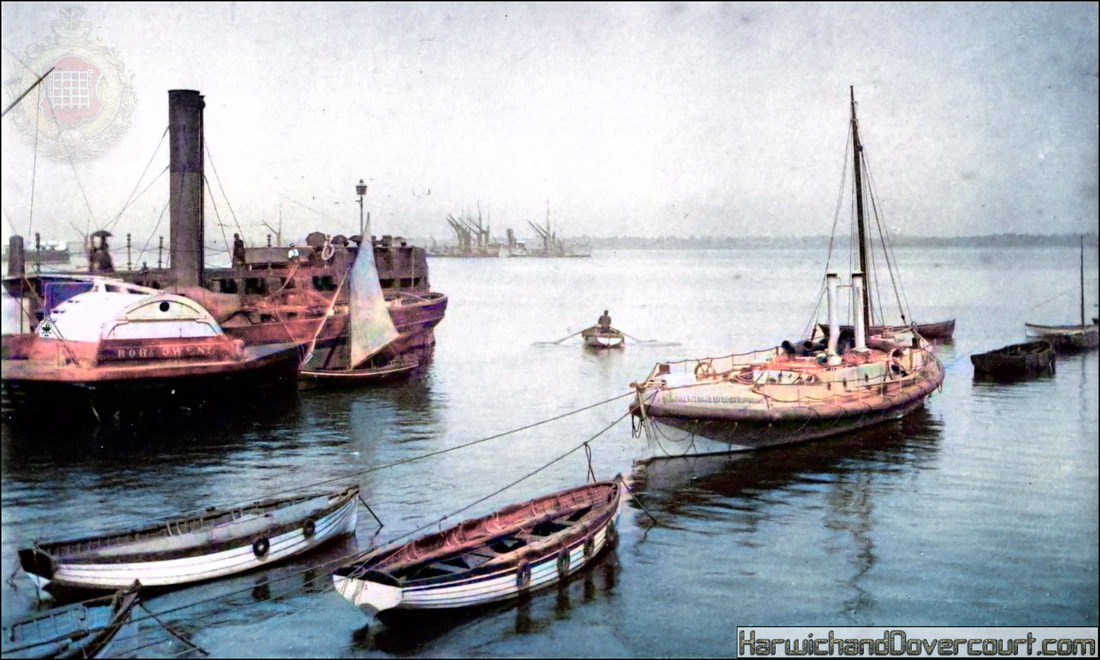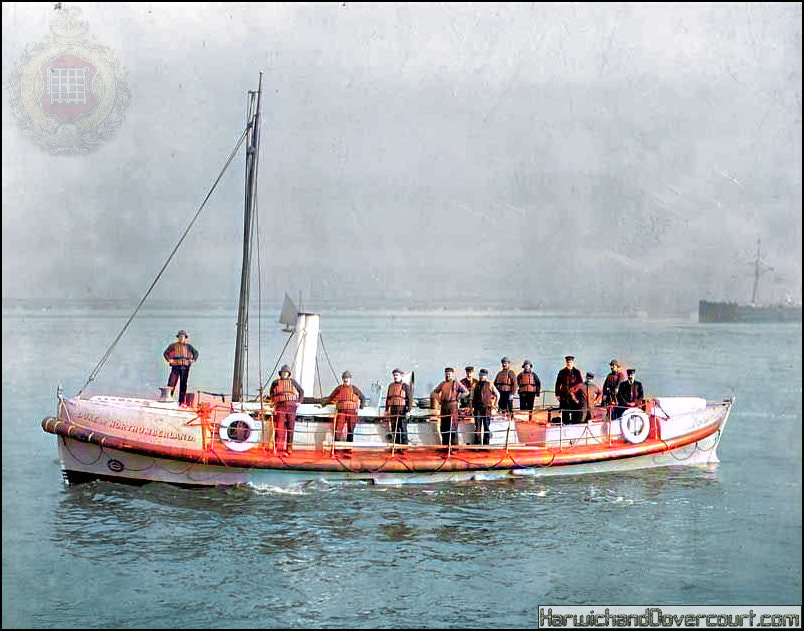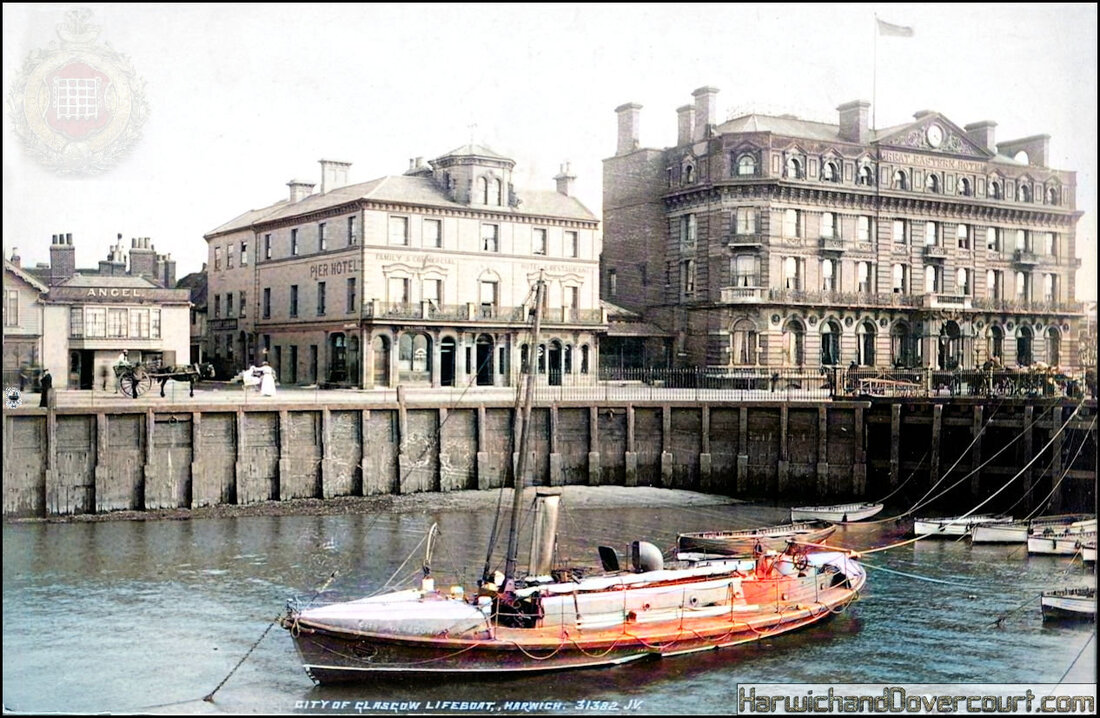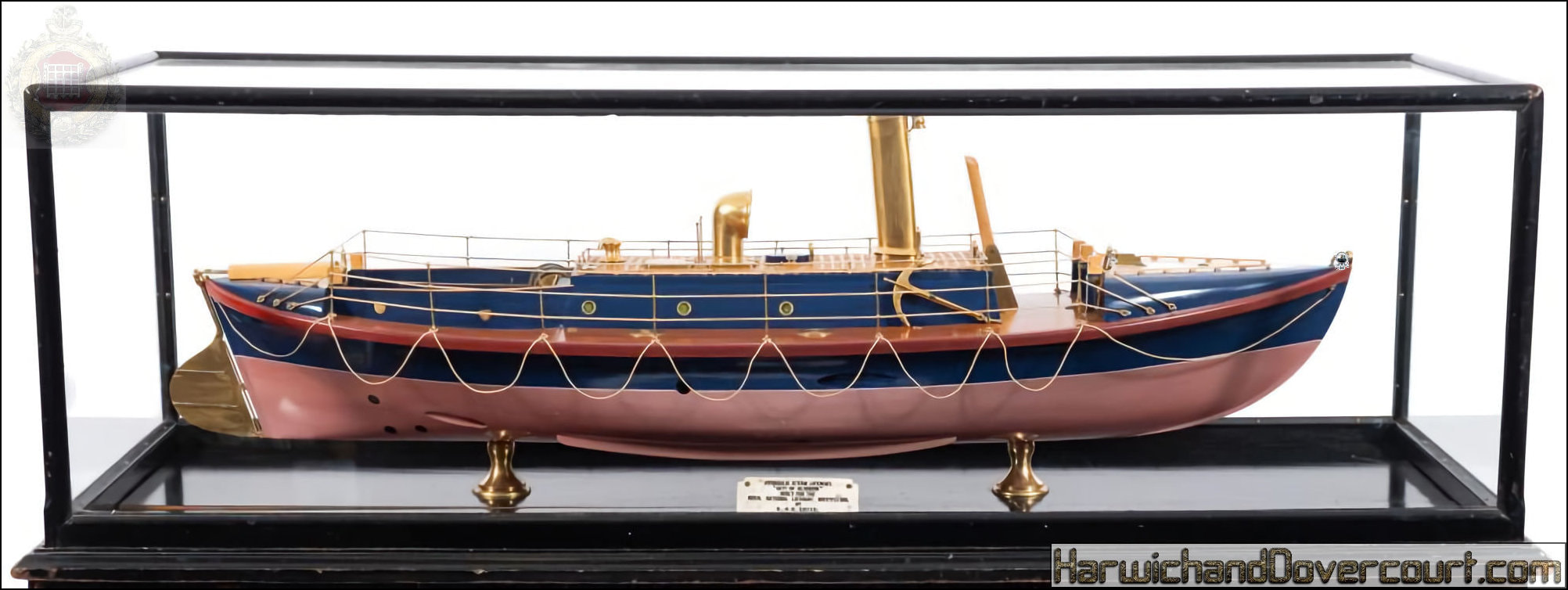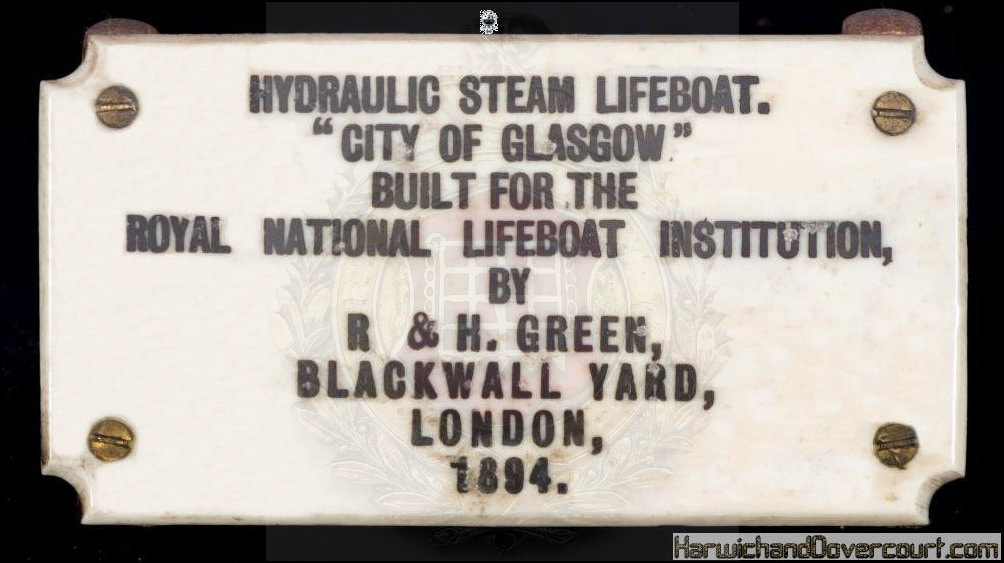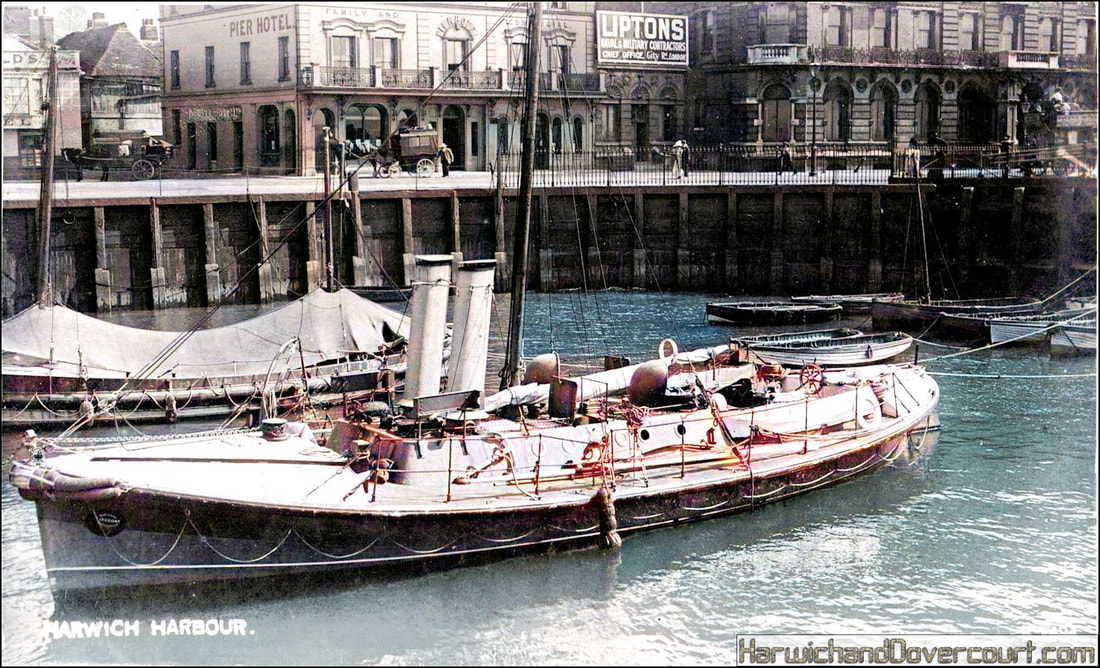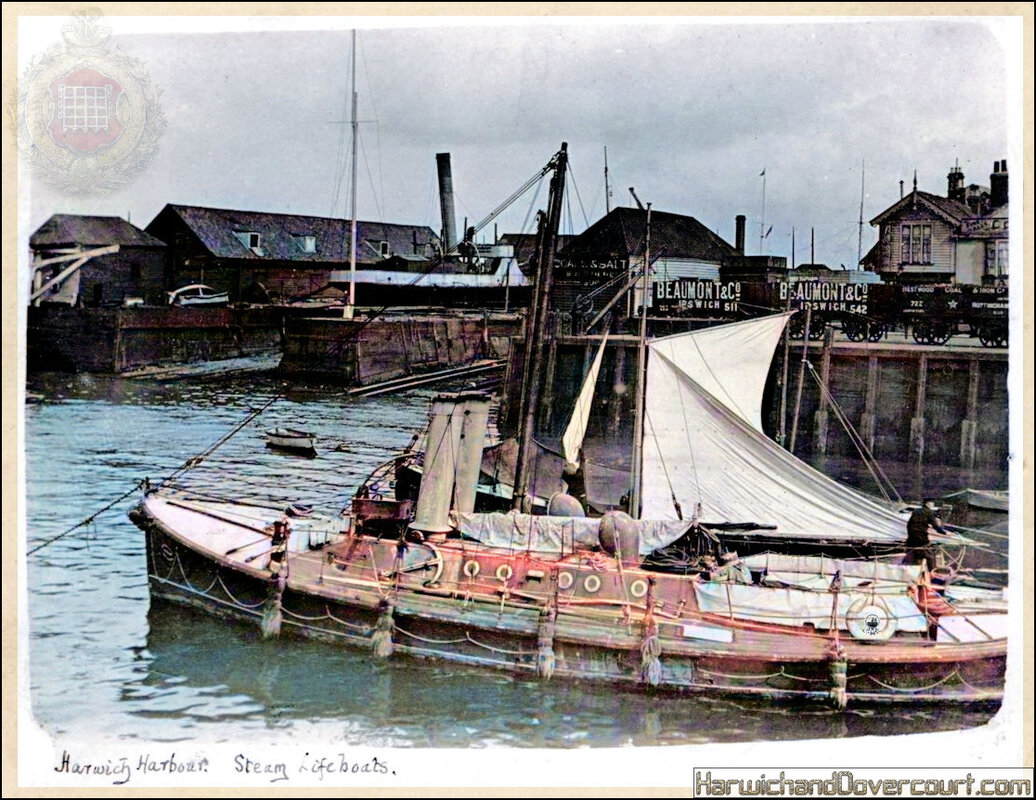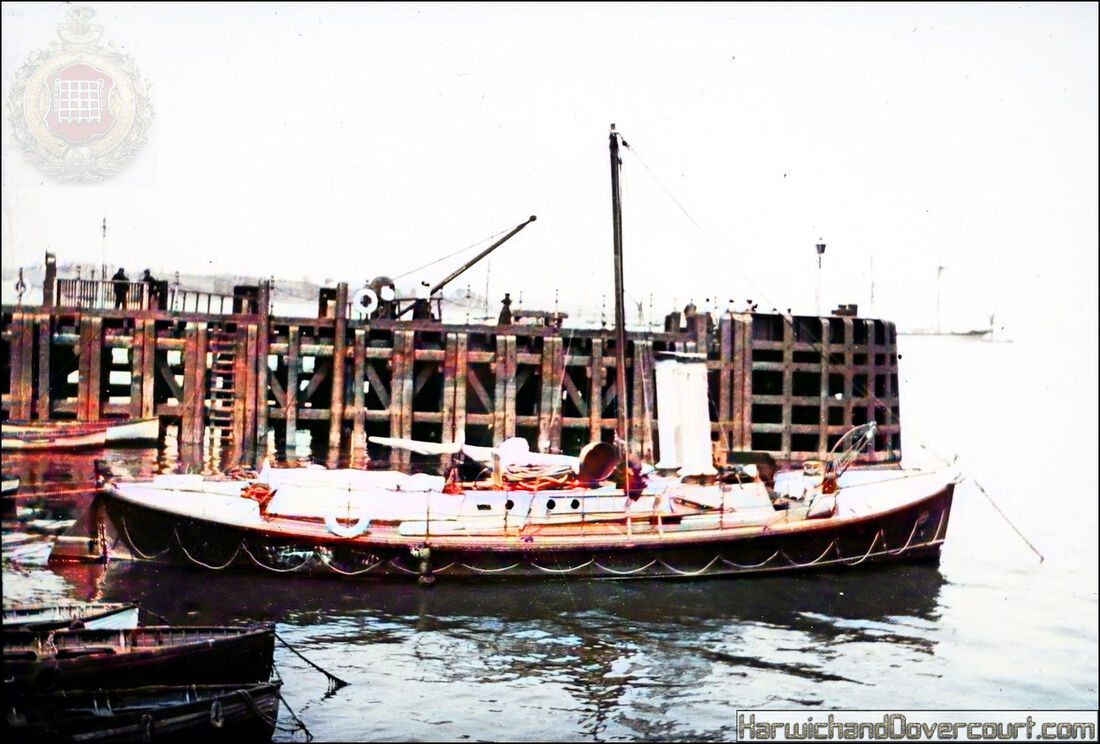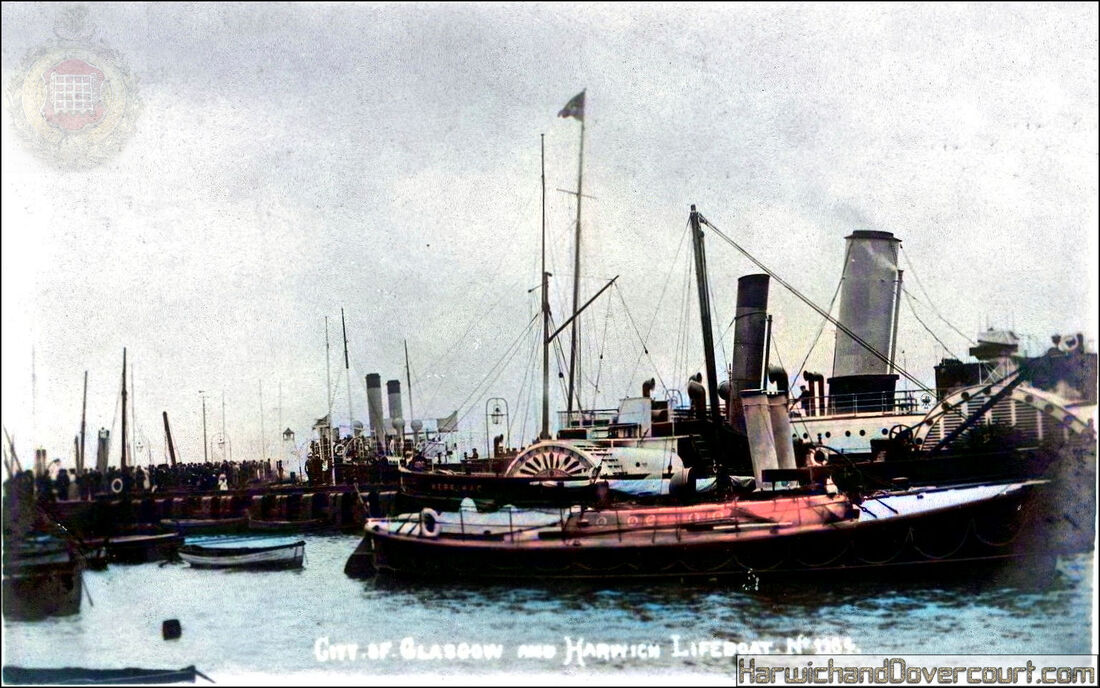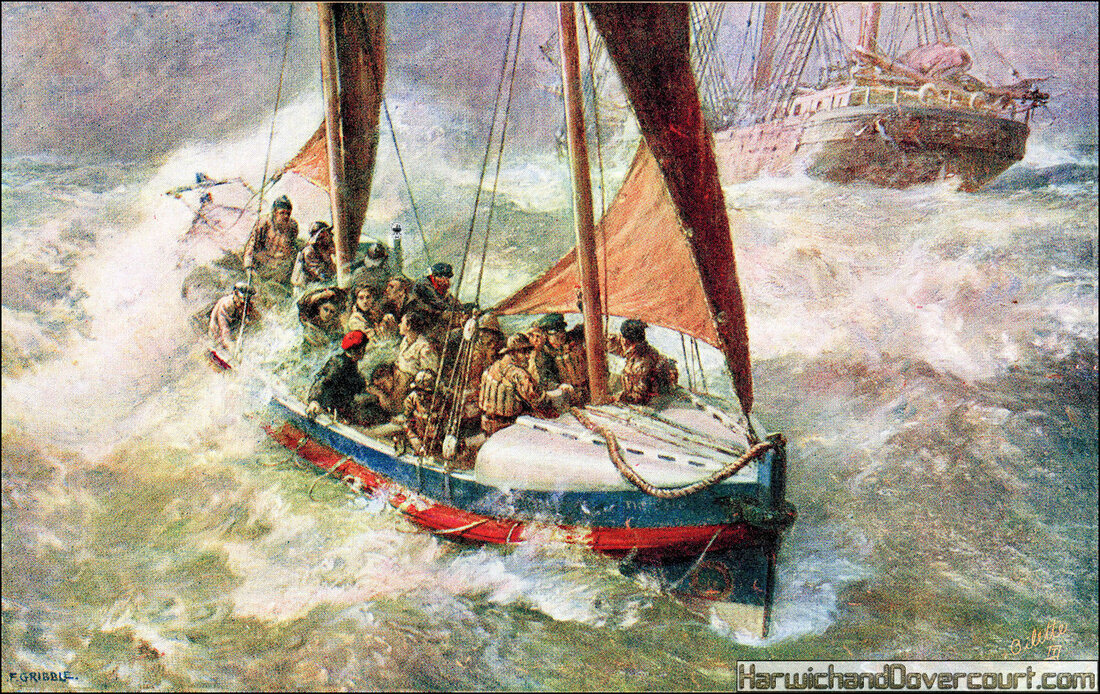Steam Driven Lifeboats
~ 01 ~ Steam Lifeboat : The Duke of Northumberland in Harwich Harbour, Essex (1890) H&D ~
The Duke of Northumberland
Stationed at Harwich from 1890
The Duke of Northumberland was the first steam-powered lifeboat used by the RNLI. In 1908, when The Duke and her crew led by RNLI Coxswain William Owen saved 9 men from the stricken steamer “The Harold” in dangerously high seas for which the crew were awarded RNLI Gold Medals.
The Duke of Northumberland was constructed of steel plates, triple riveted with 72,000 rivets to withstand the stresses of the sea and its steam engines provided propulsion through hydraulics; jets of water replaced propellers (which could get tangled in ropes and debris). Being steam powered, the crew would have needed to continuously shovel coal in the boiler room – no mean feat whilst being tossed around in a stormy sea.
The lifeboat went into service at Harwich Lifeboat Station in 1890 but spent much of her time stationed at Holyhead, eventually being retired in 1928 having rescued 295 people.
Stationed at Harwich from 1890
The Duke of Northumberland was the first steam-powered lifeboat used by the RNLI. In 1908, when The Duke and her crew led by RNLI Coxswain William Owen saved 9 men from the stricken steamer “The Harold” in dangerously high seas for which the crew were awarded RNLI Gold Medals.
The Duke of Northumberland was constructed of steel plates, triple riveted with 72,000 rivets to withstand the stresses of the sea and its steam engines provided propulsion through hydraulics; jets of water replaced propellers (which could get tangled in ropes and debris). Being steam powered, the crew would have needed to continuously shovel coal in the boiler room – no mean feat whilst being tossed around in a stormy sea.
The lifeboat went into service at Harwich Lifeboat Station in 1890 but spent much of her time stationed at Holyhead, eventually being retired in 1928 having rescued 295 people.
